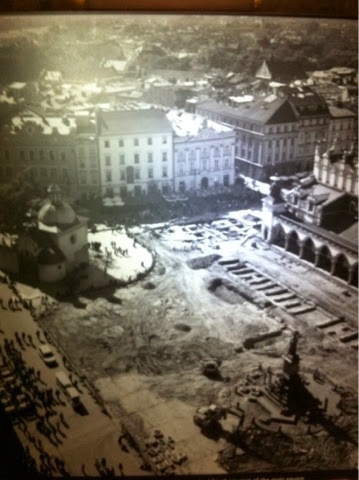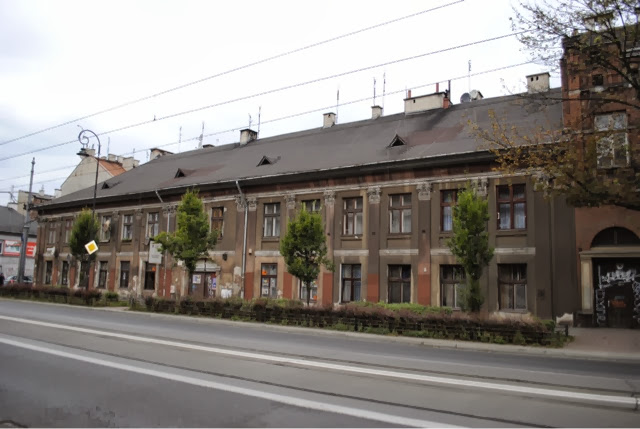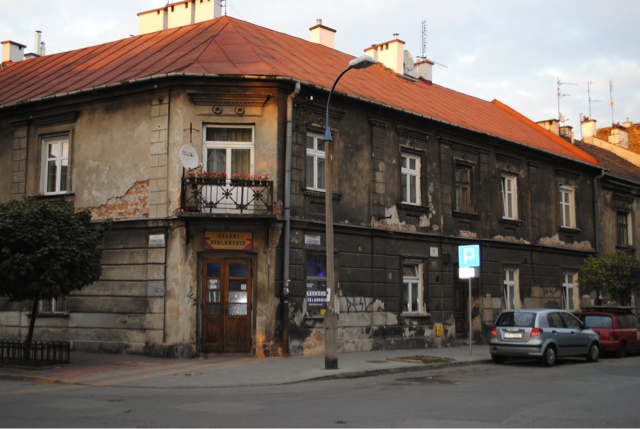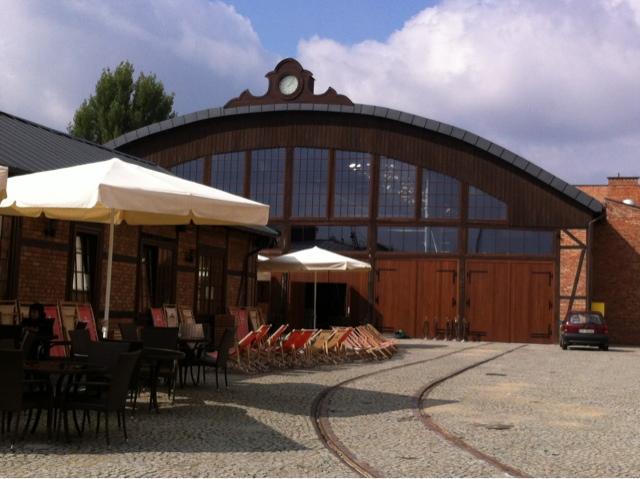The museum is open daily. On Tuesdays the admission is free, however the hours are shorter on that day. Every first Tuesday of the month the museum is closed. Admission is rather steep for Polish standards - 19 zloty, but is a pretty good price in American dollars. It is highly recommended that you reserve your tickets in advance, as they are often sold out. You reserve a particular entrance time. Reservations can be made online or in the ticket office in the Cloth Hall (on the opposite side of the building from the museum entrance). Even on the free Tuesdays a reserved entrance time is required.
The information on Medieval trade in Poland is quite comprehensive. The exhibits show various goods that were traded, such as copper, lead and salt. Copper was often in the form of a disc; salt in the form of a cylinder and lead in the form of a slice of bread. Copper would often come from Hungary and go to Poland, whereas salt and lead would come from Poland and go down to Hungary.Salt mining centers in Poland were in Bochnia and Wieliczka. Much of the profit from the salt mining would go to the King of Poland (ie. Kazimierz the Great used the money to endow Jagiellonian University in Cracow.)
Here are photos of copper, lead and salt.
Besides these displays of goods, there were touch screen computers to scroll through more detailed information on trade in Cracow. I learned that Cracow was set up as a Medieval trade center. There were trade routes in all directions from Cracow leading to other countries. Tolls were assessed on routes and bridges. The amount of toll depended on the type and size of transport vehicle. Traders traveling on foot also had to pay tolls. Fines were doled out for offenses such as traveling on closed routes and walking on the grass. Those exempt from tolls were merchants who were citizens of Cracow and pilgrims on their journeys.
Some of the trade done by Cracow merchants was long distance. They brought back cloth and wine from Flanders, figs and almonds from Spain, copper and iron from Hungary, and other goods from various places. From the East merchants were able to procure silk, cotton, wax, aluminum and spices ( ( i.e.pepper and ginger).
Polish goods that were commonly traded abroad included linen, hats, textiles, herring, beer, lead, copper and salt. Cracow was the main center of trade in Poland. Wroclaw was the second center of trade on an east-west route. Cracow had a weigh house to supervise the accuracy of weighing copper. Copper often ended up being transported to the Baltic Sea for shipments abroad. I was not aware that Cracow was a member of the Hanseatic League. I am sure that membership provided many opportunities to trade abroad.
There were settlements in the area around the Cloth Hall on Cracow's main square. The people who lived there worked as craftsmen in the areas of woodworking, pottery making and metal working. Trading took place. The homes were made of wood and had wooden or dirt floors. A new homeowner would put a basket of food under the first beam of the house's foundation as an offering for good fortune. At some point, maybe during the Mongol invasion of 1241, the settlement was consumed by fire. It was not rebuilt. In 1257 the prince orders the leveling of the settlement and the building of a new market square over the old market.
Here is a photo from the exhibit about the settlement and the fire. You can see the dirt floor and foundation.
Locks.Many times the market square was leveled and another one built on top of it. In the museum are many examples showing a cross-section of the ground and the different layers of civilization. Here is one such example. Sometimes there were layers of stone or wood built on top of each other.
There was even a drainage system (an open space under buildings) to allow water to flow through and not flood buildings. Here it is.
Cracow's layout changed during the years. Here is an early map of Cracow. I do not recall how old this map is, but Cracow's walled-in part is pretty small. The market square would be in the center of the large walled-in area. Note that settlements were starting outside the wall too.
As the site was being excavated, household items were found buried underground.
Here are some:
Combs and little figurines.Keys.
Large cemeteries were discovered in various locations in the market square area and around St. Adalbert's church in the square. Often common items were buried with people, ie. beads, tools and coins in the person's hand or mouth. Those odd people suspected of being vampires were buried with their bodies arranged in strange ways -either in the fetal position or decapitated. This way of burial happened so the "vampires" could not torment the living. If it was determined that someone had not been properly buried, then they would be dug up and given a proper burial.
Here is a display of someone buried. This person must have been "normal" as the body position is normal. Note the arms folded in. That is a traditional burial pose.
The excavations of the ground around and underneath the current Cloth Hall were started in 2005. It was a bigger project than they anticipated. Here are photos from the dig.
Here is another photo from 2005. Note the layers of rock below the surface. Those show the previous ground levels of settlements there.
Here is another angle of the square from 2005. The little church is St. Adalbert's (still there) where they discovered a large cemetery outside the church.
The "rich" stalls whose foundations you see next to the Cloth Hall were the places luxury goods were sold. The stalls were the idea of Queen Jadwiga in the mid 14th century. Merchants's widows sold goods there. They were 2 story stalls (an above ground level and an underground level), separated from the Cloth Hall by a narrow street. They were parallel to the Cloth Hall on one side of the Cloth Hall. (See the photo above and the first photo I posted of the excavations.) The stalls were pulled down in 1868. Not sure why.
Here is a photo of a display of these "rich" stalls in the museum.
This underground museum below the market square is one of several in Poland. I believe this one in Cracow is the largest. In Rzeszow there is also another museum under the market square. It is much smaller than the one in Cracow. Both show you traces of ancient civilizations centered around a market that have become buried over time. These museums are worth a visit. There is a lot of history underground.


















































